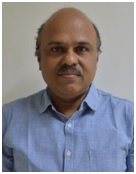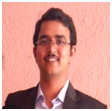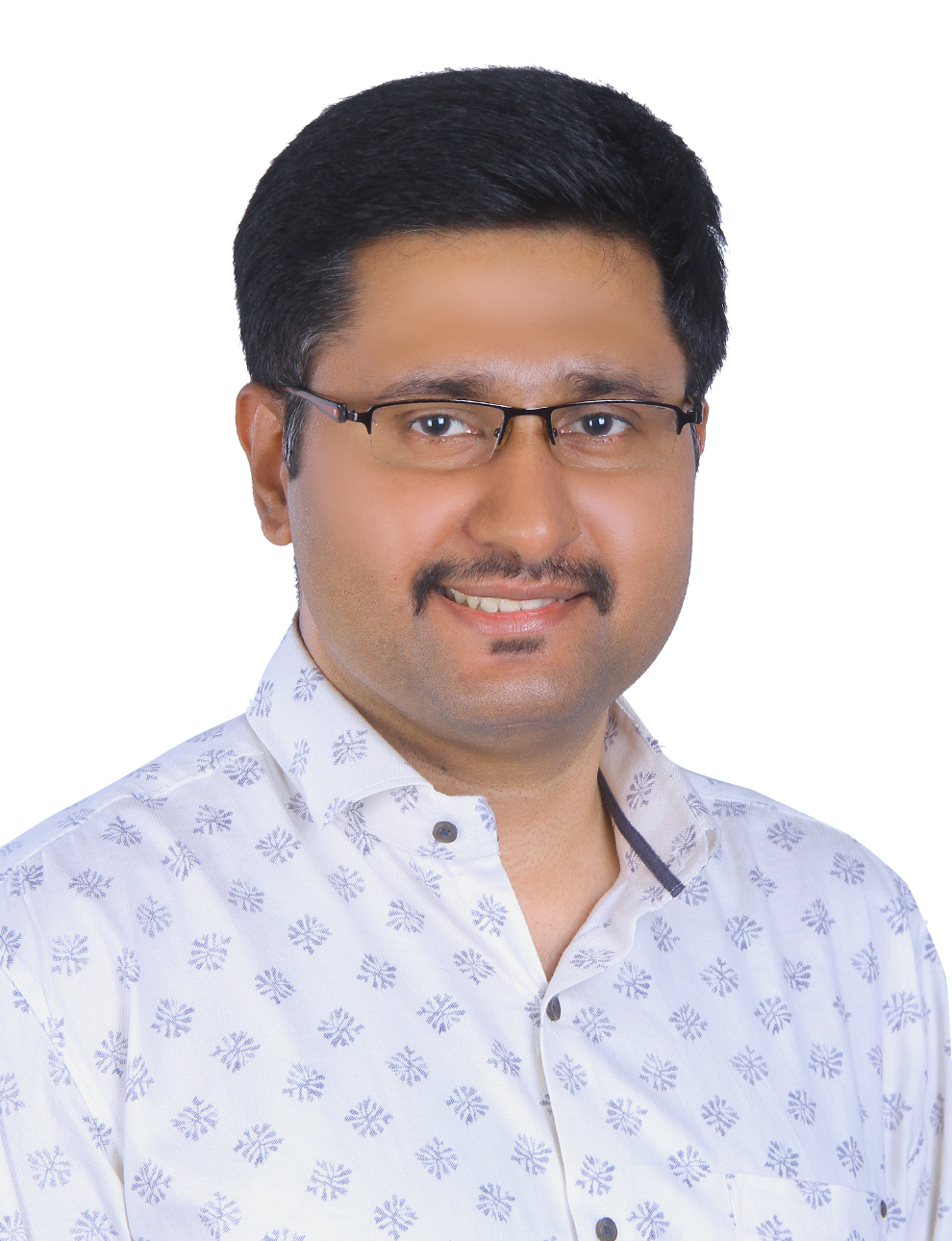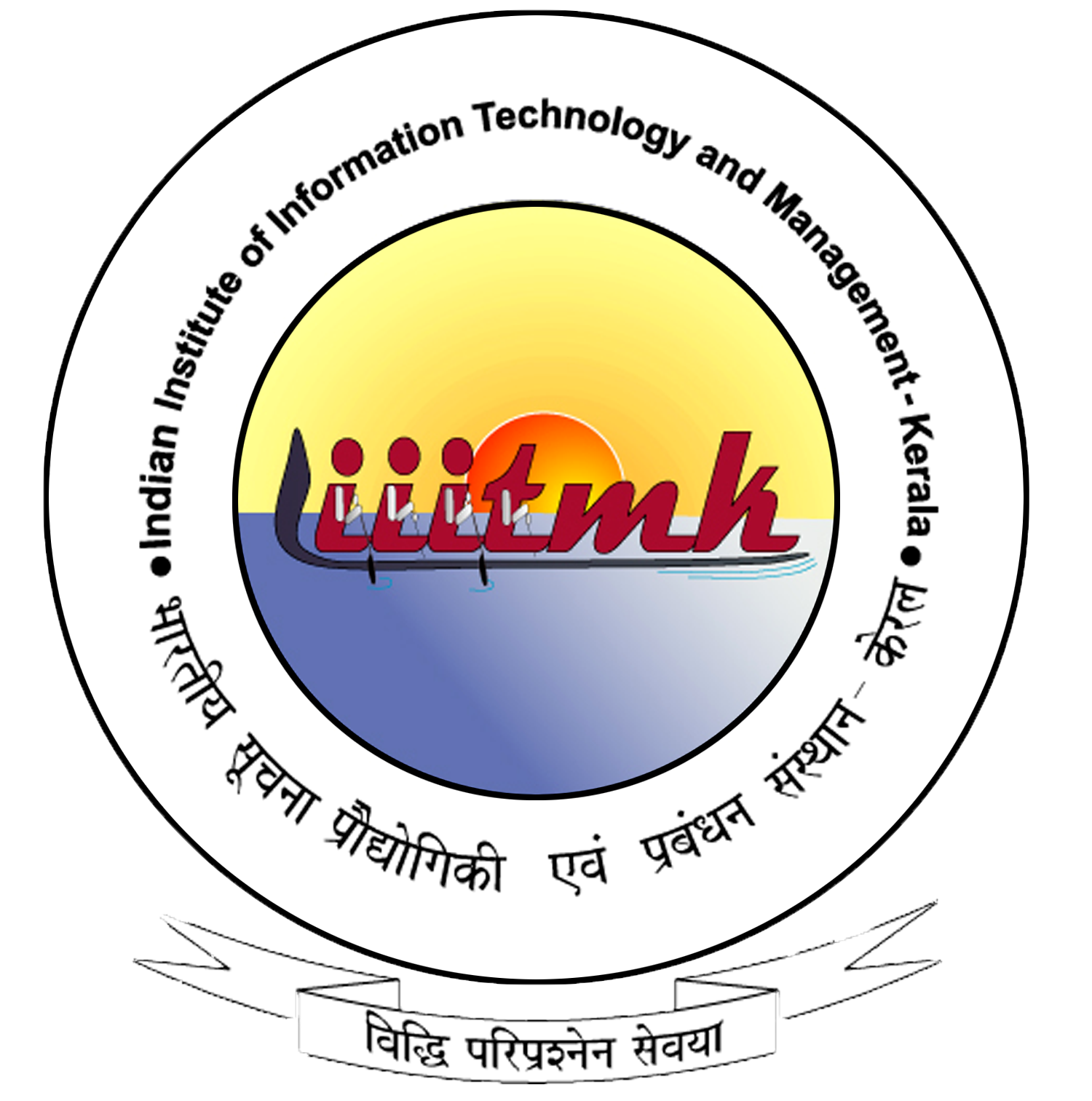Tutorials
- Tutorial 1: Complex Networks: A Networking Perspective, Dr. B. S. Manoj, IIST and Dr. Abhishek Chakraborty, Indian Institute of Technology Madras Date of the tutorial: December 20, 2019, 2.00 pm
- Tutorial 2: Tutorial / Hands-on Workshop on Bayesian Optimization, Dr. Sinnu Susan Thomas, Processing of Speech and Images, Department of Electrical Engineering, KU Leuven, Belgium Date of the tutorial: December 19, 2019, 2.45 pm
- Tutorial 3: Hands-on training on BigData Analytics and Machine Learning with PySpark, Dr. T. K. Manojkumar, Professor, IIITM-K Date of the tutorial: December 18, 2019, 2.45 pm
- Tutorial 4: CAN Network Development Program, Venkatesh Mane, Professor at KLE Technological University, Hubballi, Karnataka, India Date of the tutorial: December 20, 2019, 2.00 pm
- Tutorial 5: Social Engineering: Exploiting the Weakest Link, Adarsh S V Nair, Head of Information Security UST Global Inc, Trivandrum, India Date of the tutorial: December 19, 2019, 2.45 pm
- Tutorial 6: Fog Computing, Edge Computing and a return to privacy and personal autonomy, Mr. Michael Losavio, University of Louisville, USA Date of the tutorial: December 18, 2019, 2.45 pm
Tutorial 1: Complex Networks: A Networking Perspective
Dr. B. S. Manoj, Professor and Head, Department of Avionics, Indian Institute of Space Science and Technology, Thiruvananthapuram, India. Email: bsmanoj@ieee.org
Dr. Abhishek Chakraborty, Institute Post Doctoral Fellow, Department of Computer Science and Engineering, Indian Institute of Technology Madras, Chennai, India. Email: abhishek2003slg@ieee.org
Date of the tutorial: December 20, 2019, 2 pm
Abstract: An abstract model of any complex physical system gives rise to a complex network model. Networks obtained by modeling complex systems result in a complex interconnection of nodes (vertices) by edges (links or arcs). The study of complex networks, also known as network science, is important due to the fact that complex networks appear in many aspects of our life such as biological networks, molecular networks, social networks, transportation networks, electric power grids, communication networks, and the Internet. In fact, most physical and biological systems often behave as complex networks of subsystems and connectivities among them. Therefore, complex network modeling spans a large number of natural as well as man-made networks. Further, there has been an evolution of Big Data in the form of large scale networks arising from social networks, biological networks, computer networks, and the Internet. This tutorial is an effort toward understanding the networking aspect of complex networks and discuss the current state of research as well as the open research issues.
I. MOTIVATION AND OBJECTIVES: Studying and analyzing complex physical systems is not only challenging but also unavoidable in our daily life. As computing, communication, and physical systems become more and more complex, new techniques and solutions are required to model and characterize them. The volume of information exchanged as well as the diversity of devices communicating over the Internet have grown tremendously. For example, the Internet had only less than 100 nodes two decades ago. Today, it has more than 6 billion connected devices. The expansion of the Internet resulted in emergence of the Internet of things (IoT) which consists of traditional physical objects (or items, usually known as things) such as household furnitures, kitchen appliances, electrical lights, fans, as well as other similar appliances, electromechanical devices such as automated gates, all are Internet-enabled. The growth of IoT is predicted to go beyond 50 billion nodes by 2020. Due to such fast-growing complexity, analyzing the topological and other characteristics are too challenging; therefore, complex network analysis is essential to model and characterize the ever-growing Internet. Similarly, complex network analysis provides a means to model, characterize, and understand many such complex physical-world systems. Recently, further applications of complex network concepts emerge in the context of wireless mesh networks and wireless sensor networks.
The key objectives of this tutorial are listed in the following:
- To understand the meaning of complex networks, the metrics that can be used to study complex networks, the community detection approaches in complex networks, and the entropy definitions in complex networks.
- To review random networks and the important metrics to characterize random networks.
- To thoroughly comprehend the concept of small-world networks and related metrics, real-world examples of small-world networks, and evolution of small-world networks.
- To understand scale-free networks, importance of scale-free networks, metrics of scale-free networks, real-world examples of scale-free networks, and evolution of scale-free networks.
- To understand the concept of small-world wireless mesh networks and existing approaches for them.
- To understand the benefits of small-world wireless sensor networks and existing literature in small-world wireless sensor networks.
- To review a few application scenarios of complex networks such as signal processing on graphs, optical fiber networks, and transportation networks.
- To discuss a few open research directions in complex network research with a networking perspective.
II. OUTLINE OF THE TUTORIAL AND ASSOCIATED TECHNICAL DETAILS
The tutorial is divided in two sessions and each session is also subdivided into multiple topics. Note that each session is designed for 90 minutes duration and hence, the two sessions will cover 3 hours altogether. A tentative outline of the tutorial, along with session-wise time division and topics to be covered, is provided in the following:
Session One (90 minutes)
1) Introduction to complex networks — 50 minutes
- Definition of complex networks
- Major types of complex networks
- Metrics associated with complex networks
- Community detection in complex networks
- Complex network entropy
- An introduction to random networks
2) Small-world networks — 20 minutes
- Characteristics of small-world networks
- Real-world examples of small-world networks
- Realization of small-world networks through various probabilistic and deterministic approaches
3) Scale-free networks — 20 minutes
- Characteristics of scale-free networks
- Real-world examples of scale-free networks
- Realization of scale-free networks through various probabilistic and deterministic approaches
Session Two (90 minutes)
1) Small-world wireless mesh networks (SWWMNs) — 25 minutes
- Characteristics and classification of SWWMNs
- Realization of SWWMNs through various probabilistic and deterministic approaches
- Open research issues in SWWMNs
2) Small-world wireless sensor networks (SWWSNs) — 25 minutes
- Characteristics and classification of SWWSNs
- Benefits and challenges of SWWSNs
- Realization of SWWSNs through various probabilistic and deterministic approaches
- Open research issues in SWWSNs
3) Emerging applications of complex networks — 25 minutes
- Graph signal processing applications
- Applications in optical fiber communications
- Applications in transportation networks
- Applications in social networks
4) Open research issues and future directions — 10 minutes
5) Conclusion — 5 minutes
III. DETAILS OF THE TUTORIAL SPEAKERS
 B. S. Manoj is currently Professor and Head, Department of Avionics, Indian Institute of Space Science and Technology (IIST), Thiruvananthapuram, India. He also worked as Associate Professor at IIST from 2011 to 2016 at the Department of Avionics, IIST. Manoj was an Infosys doctoral student during 2000–2003 in the Department of Computer Science and Engineering at the Indian Institute of Technology (IIT) Madras, Chennai, India, where he focused on the development of architectures and protocols for ad hoc wireless networks and next-generation hybrid wireless network architectures. He received his PhD in Computer Science and Engineering from IIT Madras in 2004. He obtained his MTech in Electronics and Communication Engineering with second rank at the Pondicherry Engineering College, Pondicherry Central University, Pondicherry, India, in 1998. Manoj worked as a Senior Engineer with Banyan Networks Pvt. Ltd., Chennai, India from 1998 to 2000, where his primary responsibility included design and development of protocols for real-time traffic support in data networks. From January 2004 to January 2005, he was a Project Officer at IIT Madras, India. From January 2005 to January 2011, he was at the University of California San Diego, San Diego, CA, USA, working initially as a postdoctoral researcher and later as an Assistant Research Scientist and Lecturer.
B. S. Manoj is currently Professor and Head, Department of Avionics, Indian Institute of Space Science and Technology (IIST), Thiruvananthapuram, India. He also worked as Associate Professor at IIST from 2011 to 2016 at the Department of Avionics, IIST. Manoj was an Infosys doctoral student during 2000–2003 in the Department of Computer Science and Engineering at the Indian Institute of Technology (IIT) Madras, Chennai, India, where he focused on the development of architectures and protocols for ad hoc wireless networks and next-generation hybrid wireless network architectures. He received his PhD in Computer Science and Engineering from IIT Madras in 2004. He obtained his MTech in Electronics and Communication Engineering with second rank at the Pondicherry Engineering College, Pondicherry Central University, Pondicherry, India, in 1998. Manoj worked as a Senior Engineer with Banyan Networks Pvt. Ltd., Chennai, India from 1998 to 2000, where his primary responsibility included design and development of protocols for real-time traffic support in data networks. From January 2004 to January 2005, he was a Project Officer at IIT Madras, India. From January 2005 to January 2011, he was at the University of California San Diego, San Diego, CA, USA, working initially as a postdoctoral researcher and later as an Assistant Research Scientist and Lecturer.He authored/co-authored three textbooks: Multi-Track Modular Teaching: An Advanced Teaching-Learning Method (bsmp, Amazon KDP, 2019), Complex Networks: A Networking and Signal Processing Perspective (Prentice Hall, 2018) and Ad-Hoc Wireless Networks: Architectures and Protocols (Prentice Hall, 2004). Among his other published works, Manoj’s coauthored paper “Graph Fourier Transform Based on Directed Laplacian” was awarded Springer Best Student Paper at the 11th International Conference on Signal Processing and Communications (SPCOM) 2016, Bangalore, India. His co-authored paper “Comparative Evaluation of ARIMA and ANFIS for Modeling of Wireless Network Traffic Time Series,” published in EURASIP Journal on Wireless Communications and Networking (2014), was recognized by the journal as being highly accessed. “Quality of Service Provisioning in Ad Hoc Wireless Networks: A Survey of Issues and Solutions,” published in 2006, earned Manoj and his co-authors the Elsevier Ad Hoc Networks Journal’s Top Cited Article during 2005–2010 award. At the 5th Annual IEEE Consumer Communications and Networking Conference 2008 (IEEE CCNC 2008), he and his co-authors received the Best Paper award for “On Optimizing Non-Asymptotic Throughput of Wireless Mesh Networks.” He, along with his co-authors, earned a Best Paper award for “A Novel Battery Aware MAC Protocol for Ad Hoc Wireless Networks” at the 11th International Conference on High Performance Computing 2004 (HiPC 2004). Manoj and his co-authors also received the Best Paper award for “Multi-hop Cellular Networks: Architecture and Protocols for Best-effort and Real Time Communication,” at the First Inter-Research Institute Student Seminar in Computer Science 2002 (IRISS 2002). Manoj received the IEEE International Conference on Natural Computation (ICNC) Outstanding Leadership award in 2015, the IBM Outstanding PhD Student/Thesis award for the year 2004, and the ISCA (Indian Science Congress Association) Young Scientist award for the year 2003. Manoj’s research interests include complex networks, cybersecurity, cognitive networks, ad hoc wireless networks, wireless mesh networks, software-defined networks, delay tolerant networks, and wireless sensor networks.
Abhishek Chakraborty is currently an Institute Post Doctoral Fellow in the Department of Computer Science and Engineering at Indian Institute of Technology Madras, India, where his primary responsibilities include applying the concept of complex network analysis to develop novel architecture and protocol solutions for softwarized 5G networks. Abhishek completed his PhD in 2018 from Indian Institute of Space Science and Technology (IIST), Thiruvananthapuram, India, where he focused on understanding the evolution of finite-sized complex networks and applying the observations to design efficient technological networks such as ad-hoc networks for disaster response scenarios, computer networks, communication networks, next-generation wireless networks, and transportation networks. He obtained his BTech in Electronics and Communication Engineering (ECE) from Maulana Abul Kalam Azad University of Technology (formerly West Bengal University of Technology), West Bengal, India and Masters of Engineering in ECE from Birla Institute of Technology, Mesra, Ranchi, India, in 2007 and 2012, respectively. From 2017 to 2018, he was a Senior Project Fellow at the Department of Avionics, IIST, where his primary responsibilities included research in the applications of complex networks to design an efficient integrated enterprise network security system. He also worked as a Programmer Analyst with Cognizant Inc., Kolkata, India from 2007 to 2009. During 2012 – 2013, he served as the IEEE Student Branch Chair at IIST. He co-authored a textbook, Complex Networks: A Networking and Signal Processing Perspective, (Prentice Hall, 2018). Apart from that, one of his co-authored publications titled “Graph Fourier transform based on directed Laplacian” was selected for the Springer Best Student Paper award at the 11th International Conference on Signal Processing and Communications (SPCOM) 2016, Bangalore, India. His current research interests include network science, complex networks, softwarized 5G networks, design of next-generation wireless networks, computer networks, wireless mesh networks, and wireless sensor networks.
IV. TECHNICAL ISSUES THE TUTORIAL WILL ADDRESS
The tutorial will discuss the following technical issues:
- The importance of complex networks in general and specific to computer networking research.
- Applications of complex networks in computer network design, deployment, and performance optimization.
- Efficient algorithm design for various technological networks such as small-world wireless mesh networks and small-world wireless sensor networks.
- Existing literature in small-world wireless mesh networks and wireless sensor networks.
- A few more application scenarios of complex networks such as signal processing on graph as well as applications of complex network concepts in the design of efficient optical fiber networks and transportation networks.
- A list of relevant and timely open research problems related to complex network research.
V. TIMELINESS AND INTENDED AUDIENCE
The most important benefit of applying complex networks approach to real-world problems is to obtain a significant collection of tools in order to study various complex systems of the physical world. That is, modeling a real-world problem as a complex network model provides significant insights to the characteristics of the real-world problem. In general, we can find the following benefits in studying complex networks: (i) modeling and characterizing complex physical-world systems, (ii) design of efficient physical-world systems, (iii) development of solutions to complex real-world problems, and (iv) applications in network performance improvement in various areas such as wireless mesh networks and wireless sensor networks. This tutorial will provide a novel treatment on complex networks by focusing on communications as well as networking dimensions. The tutorial is intended for the graduate level students, researchers, academicians, and practitioners. Many open research issues also will be discussed during the tutorial.
1. First half- talk on Bayesian Optimization
An introduction to Optimization techniques, followed by an introduction and necessity of Bayesian Optimization to practical problems will be covered. In continuation, with an explanation of Gaussian Processes, several acquisition function, the working of Bayesian Optimization will be covered and conclude with some practical applications of Bayesian optimization such as for astrophysics and automotive design.
2. Second half - Hands on Bayesian Optimization (particpants are expected bring their laptops on Linux platform with Python 2.7 or its later version).
Hands on Bayesian Optimization will be handled on Python environment in which examples on the derivative free optimization will be dealt with.
Length of the tutorial - 3 hrs

Outline
- Introduction to Big Data
- Spark Architecture
- RDD in Spark
- Spark SQL & Dataframes
- Machine Learning with PySpark
Prerequisite
The participants are expected to have python programming skills and basic understating of data analytics and machine learning
Software and hardware requirements for participants' laptops
Laptops should be installed with MobaXterm (https://mobaxterm.mobatek.net/). There should not be any network issues with the laptop to connect with our main server.
 Bio: Dr. T. K. Manojkumar, Professor, IIITMK
Bio: Dr. T. K. Manojkumar, Professor, IIITMK
Ph.D from Mahatma Gandhi University, Worked as Post-doc in IIT Madras and Pohang University of Science and Technology
From 2006 onwards working as a faculty member at IIITMK
Areas of Research: Computational Science (Computer Aided Drug Design), Health Analytics etc
Publications: About 60 Publications in Internationally reputed journals with high impact factor
Projects: Research projects from DST, Govt. of India, KSCSTE & KBC, Govt. of Kerala; Analytics projects: GST-Govt of Kerala; Coffee Board, Govt. of India; Animal Husbandry, Govt. of Kerala etc.
- Develop CAN network using arm cortex-m3
- Transmit and receive data over the CAN bus.
- Build Automotive Application.
- Create CAN database using the Automotive tools
- Measuring CAN signals
- Analysis of CAN networks
- Analyze the CAN Data
- CAN protocol overview: Introduction to the CAN protocol, Overview of Reasons for the development of CAN Comparison of CAN with other serial communication protocols, ISO-OSI layers of CAN, CAN vehicle network Architecture, Features of CAN protocol, Frame formats of CAN
- CAN physical layer: CAN nodes, CAN Bus voltage levels and node interfacing techniques, CAN bit timings and baud rate settings
- CAN data link layer: CAN Bus arbitration, CAN Bus Fault Confinement
- Hands-on Exercises on Real World System: Introduction to Cortex-M3, Online compiler Hands-On session for cortex-M3, Building CAN Transmitter node
- Building a CAN Receiver node, Analysis of CAN data on desktop
- Hardware - ARM Cortex M3 LPC1768, CAN Transceiver MCP2551, DC Motor, LEDs, Toggle Switches
- Software - Online Compiler for ARM cortex LPC1768, Offline Keil_v_4 Compiler, BUSMASTER
 Bio: Venkatesh Mane, Professor at KLE Technological University, Hubballi, Karnataka, India. His current research interests include Autonomous vehicle functions such as object detection, localization, path-planning, trajectory planning, and Advanced Driver Assistance Systems. Prof. Venkatesh Mane completed his Bachelor's Degree from B.V.Bhoomaraddi College of Engineering & Technology, Hubballi, Karnataka, India, in the year 2005. He also holds a Master degree in VLSI and Embedded systems. He started his career with BCS innovations Bangalore as a research engineer, and later, he joined Robert Bosch Engineering business Solutions, Bangalore. He worked on various technologies and products at Bosch, such as Antilock Braking System, Traction Control system and Electronic stability program. He has worked for OEMs, such as Audi, BMW, VW, Daimler(Mercedes Benz), TATA, Hyundai, Honda, and many more customers at Bosch. He has trained many young engineers at Robert Bosch. He also got the opportunity to work at Robert-Bosch, Germany, and Prof. Venkatesh Mane also got the opportunity to work for Mercedes Benz Research & Development, India, and Daimler AG, Stuttgart, Germany. He has worked on HIL(Hardware-in-the-loop) systems to analyze vehicle stability with numerous maneuvers. He also conducted many workshops and Seminars on IoT, Automotive Electronics, AUTOSAR, Model-Based design techniques for embedded application development. He also developed state of the art laboratory on Automotive Electronics, which focuses on Model-Based Design using Simulink and Communication protocols such as CAN. He has developed many experimental set-ups and products. Some of them are HIL for an engine management system, throttle control module, flexible and reusable laboratory carts for automotive applications.
Bio: Venkatesh Mane, Professor at KLE Technological University, Hubballi, Karnataka, India. His current research interests include Autonomous vehicle functions such as object detection, localization, path-planning, trajectory planning, and Advanced Driver Assistance Systems. Prof. Venkatesh Mane completed his Bachelor's Degree from B.V.Bhoomaraddi College of Engineering & Technology, Hubballi, Karnataka, India, in the year 2005. He also holds a Master degree in VLSI and Embedded systems. He started his career with BCS innovations Bangalore as a research engineer, and later, he joined Robert Bosch Engineering business Solutions, Bangalore. He worked on various technologies and products at Bosch, such as Antilock Braking System, Traction Control system and Electronic stability program. He has worked for OEMs, such as Audi, BMW, VW, Daimler(Mercedes Benz), TATA, Hyundai, Honda, and many more customers at Bosch. He has trained many young engineers at Robert Bosch. He also got the opportunity to work at Robert-Bosch, Germany, and Prof. Venkatesh Mane also got the opportunity to work for Mercedes Benz Research & Development, India, and Daimler AG, Stuttgart, Germany. He has worked on HIL(Hardware-in-the-loop) systems to analyze vehicle stability with numerous maneuvers. He also conducted many workshops and Seminars on IoT, Automotive Electronics, AUTOSAR, Model-Based design techniques for embedded application development. He also developed state of the art laboratory on Automotive Electronics, which focuses on Model-Based Design using Simulink and Communication protocols such as CAN. He has developed many experimental set-ups and products. Some of them are HIL for an engine management system, throttle control module, flexible and reusable laboratory carts for automotive applications.-
Introdcution
-
Foundations of Information Security
-
Cyberspace and Cybersecurity
-
Social Engineering
-
History
-
Methodology
-
Types of Social Engineering Attacks
-
-
Phishing Attacks
-
Methodology
-
Attack Demo #1
-
Advanced Phishing Methods
-
Attack Demo #2
-
-
Recent Major Breaches
-
Major Attacks
-
Role of Social Engineering
-
Defences Against Social Engineering A ttacks
-
Protection Methods
-
Techncial Controls
-
Management Controls
-
Operational Controls
-
-
Defence Demo #1
 Bio: Mr. Adarsh S V Nair is an information Security Professional with expertise in Information Security Auditing, Risk Management, Ethical Hacking, Penetration Testing, Digital Forensic Investigation and a wide range of vulnerabilities & threats identification and mitigation. Currently, he is associated with UST Global Inc, Trivandrum as Head of Information Security, managing teams taking care of the Information Security Compliance across the organization. He has done his masters in Information Security and bachelors in Computer Science & Engineering. His certifications include CISSP, CRT, OSCP, LPT, ECSA, CPSA, CHFI, CEH, ISO 27001 Lead Auditor, ISO 22301 Lead Auditor, ISO 31000 Lead Implementer etc. He has received an Award from Govt. of Kerala for outstanding contribution to the Cyber Security domain in 2017, the top-contributor recognition from Kerala State Police Chief in 2018 and hall of fame from Google, SAP, Intel, etc. He has participated in discussions, shared his views and wrote articles on Ransomware, Financial Frauds, Phishing, Social Engineering Attacks, Dark Net, etc. in various print and visual media. Delivered talks on Information Security topics at various national and international conferences. Voluntarily, he serves as Deputy Commander - Information Security in Kerala Police Cyberdome, Co-Leader of Open Web Application Security Project (OWASP), Advisory board member of EC-Council, USA and Business Advisory Committee Member in Security(Cyber) domain at Kerala Academy for Skills Excellence(KASE). He has two international research publications in ACM and IEEE journals. More details at https://adarshnair.com/
Bio: Mr. Adarsh S V Nair is an information Security Professional with expertise in Information Security Auditing, Risk Management, Ethical Hacking, Penetration Testing, Digital Forensic Investigation and a wide range of vulnerabilities & threats identification and mitigation. Currently, he is associated with UST Global Inc, Trivandrum as Head of Information Security, managing teams taking care of the Information Security Compliance across the organization. He has done his masters in Information Security and bachelors in Computer Science & Engineering. His certifications include CISSP, CRT, OSCP, LPT, ECSA, CPSA, CHFI, CEH, ISO 27001 Lead Auditor, ISO 22301 Lead Auditor, ISO 31000 Lead Implementer etc. He has received an Award from Govt. of Kerala for outstanding contribution to the Cyber Security domain in 2017, the top-contributor recognition from Kerala State Police Chief in 2018 and hall of fame from Google, SAP, Intel, etc. He has participated in discussions, shared his views and wrote articles on Ransomware, Financial Frauds, Phishing, Social Engineering Attacks, Dark Net, etc. in various print and visual media. Delivered talks on Information Security topics at various national and international conferences. Voluntarily, he serves as Deputy Commander - Information Security in Kerala Police Cyberdome, Co-Leader of Open Web Application Security Project (OWASP), Advisory board member of EC-Council, USA and Business Advisory Committee Member in Security(Cyber) domain at Kerala Academy for Skills Excellence(KASE). He has two international research publications in ACM and IEEE journals. More details at https://adarshnair.com/This tutorial invites you to map the technical, legal and social artefacts between these elements so we may:
- Anticipate what may come and
- Identify design elements that may protect our needs in security and privacy
 Bio: Michael Losavio is an assistant professor in the Department of Criminal Justice and also teaches in the Department of Computer Science and Engineering at the University of Louisville on issues of law, society and information assurance. His focus is on law and social sciences as they relate to computer engineering, evidence and digital forensics. Courses include Digital and Computer Crime, Transnational Cybercrime and Legal Issues with Data Mining and Information Assurance.
Bio: Michael Losavio is an assistant professor in the Department of Criminal Justice and also teaches in the Department of Computer Science and Engineering at the University of Louisville on issues of law, society and information assurance. His focus is on law and social sciences as they relate to computer engineering, evidence and digital forensics. Courses include Digital and Computer Crime, Transnational Cybercrime and Legal Issues with Data Mining and Information Assurance.
He holds a J.D. and a B.S. in Mathematics from Louisiana State University, Louisiana, U.S.A. He lectured on computer law and crime at Perm State University in 2013 as a Fulbright Specialist. Selected publications include Losavio, M and Losavio, A, Information Crisis,2nd Ed. InfoBase/Chelsea House Publishing (March 2018), Losavio, M. Pastukov, P. and Polyakova, S. (2016) Cyber Black Box/Event Data Recorder: Legal and Ethical Perspectives and Challenges with Digital Forensics, Journal of Digital Forensics, Security and Law, (2016).
Call for Tutorial Proposals @ CoCoNet 2019
- Title of the tutorial
- Abstract
- Outline including a short summary of every section
- Length of the tutorial: Half-day
- Intended audience
- Specific goals and objectives
- Prior history of the tutorial presentations
- A biographical sketch of the presenter(s)
- List of THREE top publications of the Presenters in the area
- Audio Visual equipment needed for the presentation
- Presenter's name, affiliation, address, email, phone, and fax
- and other information that helps us to decide the best proposals




